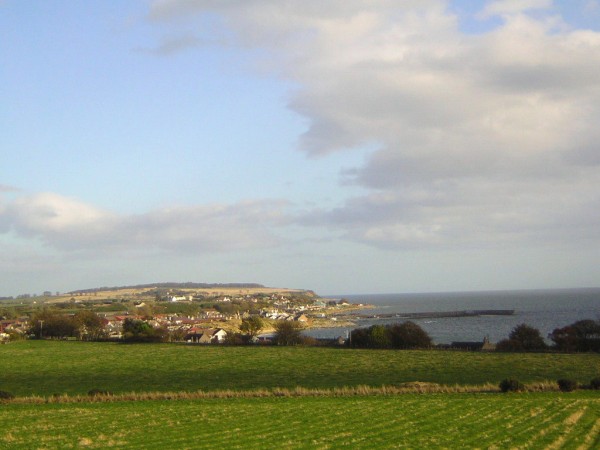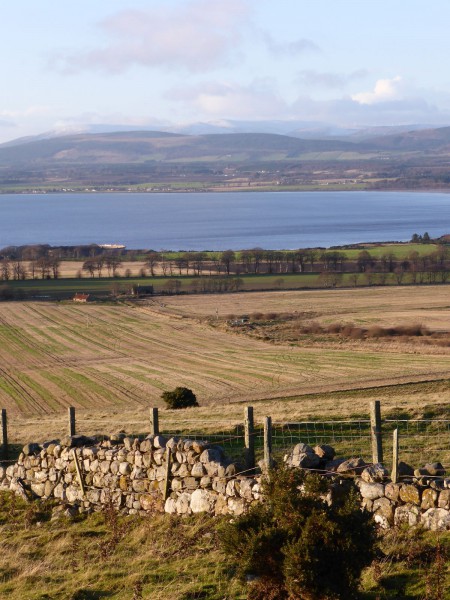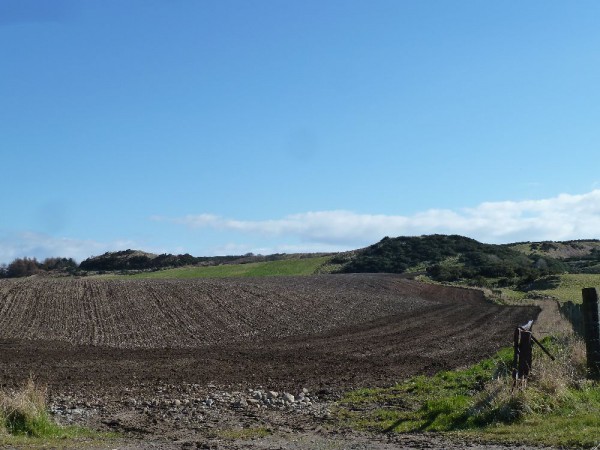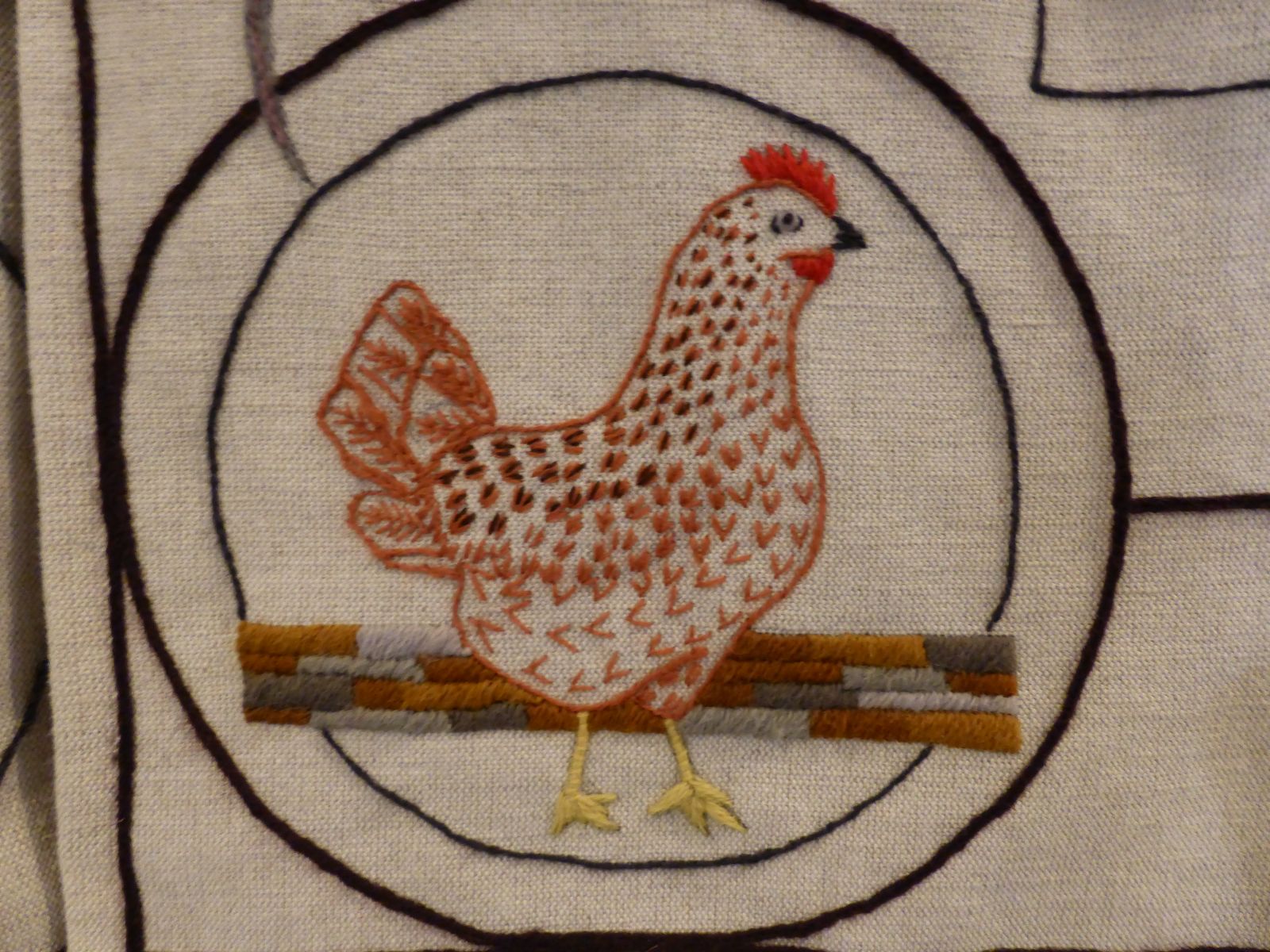Although the Villages were primarily fishing communities, and held themselves to a large degree apart from the farming ones, there were of course overlaps. The women would carry fish to the countryside and bring back eggs, vegetables and other foodstuffs, or firewood and tourcans, and some village folk worked on the local farms either all year round or seasonally, e.g. tatie-lifting. Some of the words I have collected reflect this activity, and also the fact that family vegetable gardens were important for a more varied diet.

Go to the tuath – the countryside. Tuath (too-a) is a loaded word in Gaelic. It covered the land itself, but also the people living and working on the land, the ones who made it what it was. This is reflected in the motto chosen for the Highland Land League, who campaigned for land reform in the 1880s: Is Treasa tuath na tighearna – the (lands)people are mightier than the lord. Although mainly representing crofters, this movement was quite strong in Easter Ross, a high-level champion of Highland tenants’ rights being Thomas Nichol of Resolis and Dingwall.
A key crop, in fields and garden, was the buntàta (boon-taa-ta), potato. Usually shortened to buntàt’, which is probably a step on the way to the Scots word taties, pronounced with a long A, as in sgadan is buntàt’, herring and taties. A favourite childhood meal of ours was salt herring and taties, as we were allowed to eat it with our fingers because of the bones, and always a mug of milk on the side because of the salt.
A dreel was clais (clash), a furrow, ditch, hollow. We still see this word today living on in the local place name Clashnamuaich, clais nam maigheach – ditch of the hares.
The flower on the potato plant was barra-guc, local pron. barra-kook.

After the potato harvest was over came the “laachoo”, làmhachadh – handling. This was the word for the lifting by hand, after the fields had been harvested and harrowed, of the remains of the potato crop – a kind of gleaning. By the time of our parents this was probably more a historical word than still something that was done. The poorer people would be the ones who took part. But the word has also been given to me as one that continued in use for the regular lifting of taties.
A “cappan” was a sort of fork for lifting taties in the garden, possibly from cupan, anything curved or cuplike, or from Scots coup/cope – overturn, spill. Can anyone tell me if that is the same as a hawk?
And one more tatie word: “runnach” – dry bracken to cover taties. raineach / roineach – bracken.
And once you had your taties, you of course needed a plocan, a wooden chapper, to mash them!
The turnip too was a staple: snèap (snape), as was the onion, “eenyan”- uinnean, or Scots ingan.
Another word that came up a few times is “mawchoo”, manure. This is the local pronunciation of mathachadh – improving (math = good), and in a farming context manuring to improve the soil. As one of my sources said, “ If there was a whiff of ordure in the air, the diagnosis was, ‘They are putting mawchoo on the fields’. Mawchoo was also dug into the gardens of the village.”
Iochal – a load, was another farm-related word, probably a Gaelicisation of yoke. I remember a packed lunch being called a “half-yocheen” by my uncle who worked on a farm. i.e. the break halfway between re-yoking the horses.


In the garden the beairt (byarst, byarsht) was used for a garden frame for laying seeds (line and sticks) . It was also the word for a square frame round which a handline was wound. In Gaelic it refers generally to equipment or tackle, or a contraption, or frame. Beairt-iasgaich – fishing tackle; beairt-fhighe – a loom.
Another useful item was the corran, or sickle. Some people told me the Scots word heuk (related to hook) was used instead.
Of course animals were kept too, including pigs fattened on scraps for selling on. It’s probably muc, a pig, in the name Balmuchy – baile nam muc – the pig settlement/farm. “Coolan”, cuilean – puppy, whelp, cub, was used of the young of the pig, referring to the sow and her coolans. My source here says: “Presumably should be ‘cuilean muice’ (pig whelp), but maybe many young animals were referred to like that. Strangely, I don’t remember anything but puppy for a young dog.” Does anyone else remember anything about the names used locally for young animals, or indeed any other animals, like goat or cow?
Hens were also kept – I remember having to feed my grannie’s ones, kept down at the sea end of the garden, where nothing else would grow. The cockerel was “callach”- coileach, and young hen or chicken was “ayrack”, èireag. Eggs were “oo-yan” – uighean. I don’t remember the hens themselves being called cearcan, just hens, but I vaguely recall hearing taigh-chearc for henhouse. I also recall the hens being described as “goggling”, which I took then to mean the way they looked at you (especially the rooster), but in fact I realise now it must have been from Gaelic gogail, clucking or cackling.

I hope this wee trip down the collective memory lane (thanks, as ever, to all my sources!) might have sparked some more Gaelic or local words used in the Villages in living memory. And as ever, all additional memories gratefully received! Mòran taing!